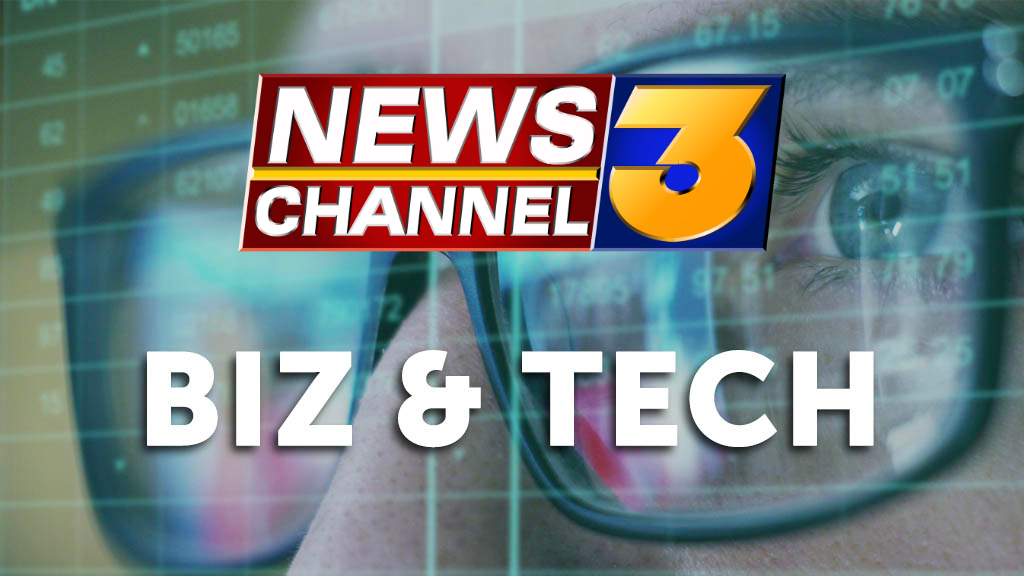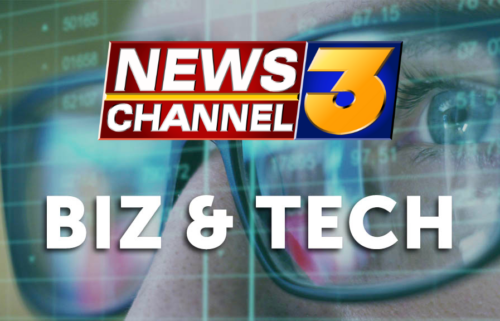Powell: Fed on track to slow aid for economy later this year

By CHRISTOPHER RUGABER
AP Economics Writer
WASHINGTON (AP) — The Federal Reserve will start dialing back its ultra-low-rate policies this year as long as hiring continues to improve, Chair Jerome Powell said Friday, signaling the beginning of the end of the Fed’s extraordinary response to the pandemic recession.
In a speech given virtually to an annual gathering of central bankers and academics, Powell said the economy had improved significantly this year, with average hiring in the past three months reaching the highest level on record for any similar period before the pandemic. Fed officials are monitoring the rapid rise in infections from the delta variant, he said, but they expect healthy job gains to continue.
The Fed has been buying $120 billion a month in mortgage and Treasury bonds to try to hold down longer-term loan rates to spur borrowing and spending. Powell’s comments indicate the Fed will likely announce a reduction — or “tapering” — of those purchases sometime in the final three months of this year. Most economists expect the announcement in November, with tapering actually beginning in December.
Powell stressed that the Fed’s tapering of its bond purchases does not signal that it plans anytime soon to start raising its benchmark short-term rate, which it’s kept near zero since the pandemic tore through the economy in March 2020. Rate hikes won’t likely begin until the Fed has finished winding down its bond purchases, which might not occur until mid-2022. Powell said the Fed would need to see much further economic improvement before it would begin raising its key rate, which influences many consumer and business loans.
“We have much ground to cover to reach maximum employment, and time will tell whether we have reached 2% inflation on a sustainable basis,” Powell said, referring to the Fed’s target inflation rate.
Inflation is much higher than 2% now, Powell acknowledged, but he underscored his view that the current price spike is temporary. He warned that history shows that raising rates too soon, in response to temporary price increases, can weaken hiring and hurt the unemployed.
Such comments bolstered the notion that the Fed is still a long way off from raising its benchmark short-term rate.
“If anything this was a calming speech,” said Brian Bethune, an economist at Boston College. “There’s nothing here in the short run that will stampede interest rates higher.”
Over time, the end of the Fed’s bond-buying could put upward pressure on borrowing costs for mortgages, credit cards, and business loans. As Powell spoke Friday, though, the yield on the 10-year Treasury note, which closely influences the 30-year mortgage rate, declined to 1.32% from 1.34% Thursday.
Stock investors, too, appeared to welcome Powell’s message of a gradual withdrawal of the Fed’s economic support and his view that surging inflation pressures will likely prove temporary. The Dow Jones Industrial Average rose a sharp 230 points, or nearly 0.7%, several hours after the Fed chair spoke.
“Markets appreciate that there is a different test for raising rates than there is for tapering, and any communications on tapering don’t have any direct effect on raising rates,” said Steve Friedman, an economist at asset manager MacKay Shields and a former senior staffer at the New York Fed.
That marks a sharp contrast with 2013, when Ben Bernanke, then the Fed chair, triggered what came to be known as the “taper tantrum” by unexpectedly suggesting that the Fed would soon reduce an earlier round of bond buys — a remark that sent longer-term rates spiking. The jump in rates occurred partly because investors thought the beginning of a taper meant that rate hikes were close behind, which turned out not to be true.
On Friday, Powell said inflation has risen enough to meet the test of “substantial further progress” toward the Fed’s goal of 2% annual inflation over time, which was necessary to begin tapering. There has also been “clear progress,” he said, toward the Fed’s goal of maximum employment. He spoke via webcast to the Jackson Hole Economic Symposium, which is being held virtually for a second straight year because of COVID-19.
But Powell suggested that while inflation has surged, causing difficulties for millions of Americans, the price acceleration should ease once the economy further normalizes from the pandemic and supply shortages abate.
If the Fed were to reduce its stimulus “in response to factors that turn out to be temporary,” the Fed chair cautioned, “the ill-timed policy move unnecessarily slows hiring and other economic activity and pushes inflation lower than desired.”
Powell also noted that while average wages have risen, they haven’t increased enough to raise fears of a “wage-price spiral,” as occurred during the ultra-high-inflation 1970s.
“Today,” he said, “we see little evidence of wage increases that might threaten excessive inflation.”
If anything, Powell said, the factors that helped keep inflation super-low for years before the pandemic — the growth of online retail, lower-cost goods from overseas, slowing population growth — could re-emerge as the pandemic fades.
Yet Powell’s comments served to underscore what looks like a divide on the Fed’s policymaking committee between himself, along with other officials such as Fed Governor Lael Brainard who favor patience in reversing the low-rate policies, and other policymakers who are pushing for a taper to begin soon so that a rate hike could quickly follow, if needed.
“Let’s start the taper, and let’s do it quickly,” Raphael Bostic, president of the Federal Reserve Bank of Atlanta, said early Friday on CNBC before Powell’s speech. Bostic said he expects the central bank to raise rates in late 2022 — earlier than the average among all Fed policymakers, who project the first rate hike in mid-2023.
Bostic and some of his fellow Fed regional bank presidents, including Jim Bullard of the St. Louis Fed, Robert Kaplan of the Dallas Fed and Eric Rosengren of the Boston Fed, say they worry that high inflation will persist longer than Powell appears to believe. Some of these Fed bank presidents report that business people they speak with say they’re continuing to raise prices to offset their own higher costs for wages and parts.
A sharp jump in inflation has put the Fed’s ultra-low-rate policies under growing scrutiny, both in Congress and among ordinary households that are paying more for food, gas, and hotel stays. Inflation, according to the Fed’s preferred gauge, rose 3.6% in July compared with a year earlier, the biggest increase in three decades. The month-to-month increase, however, slowed from 0.5% to 0.3%.
Complicating the Fed’s decision-making, the resurgence of the pandemic has confounded the Fed’s expectations that the economy and job market would be on a clear path to improvement by this fall. The delta variant could slow spending in such areas as air travel, restaurant meals and entertainment.
___
AP Economics Writer Paul Wiseman contributed to this report.
